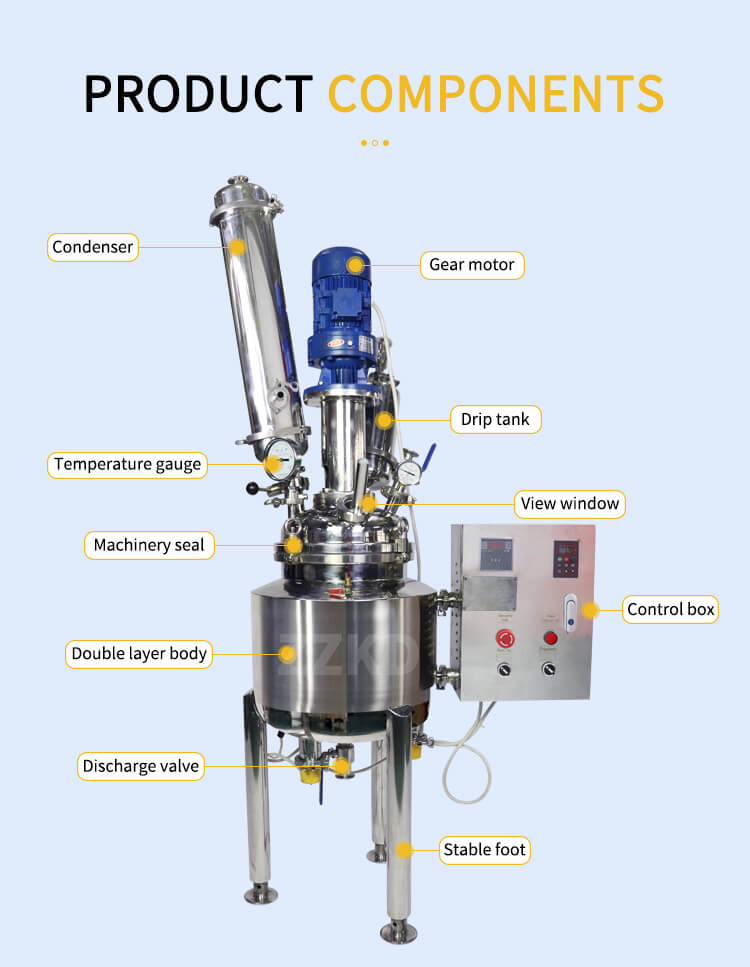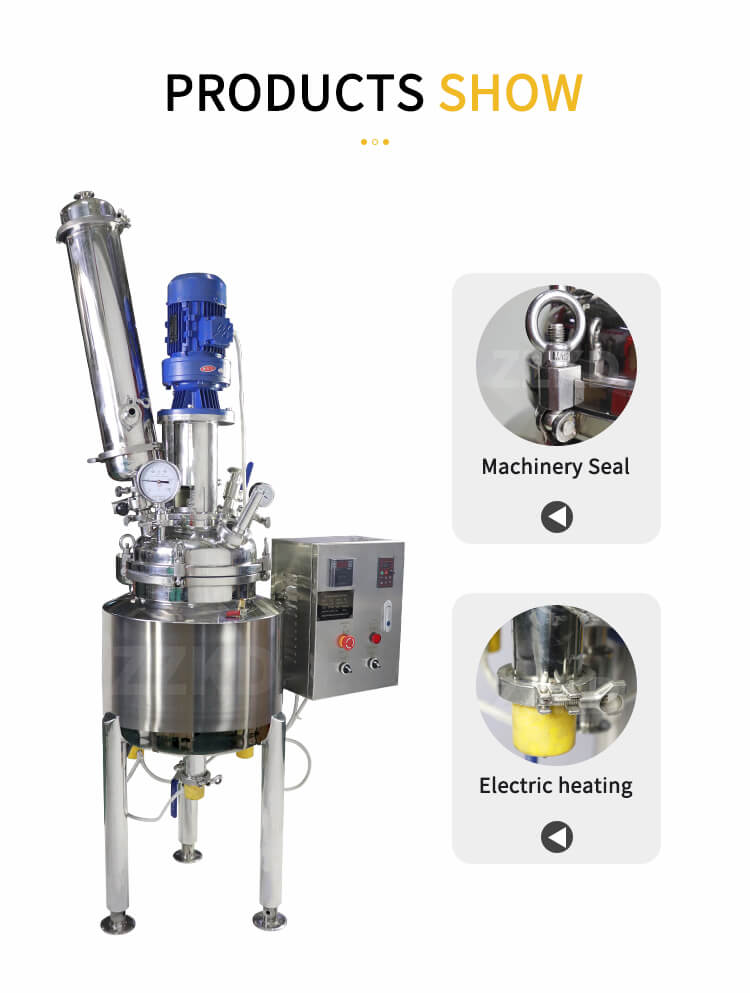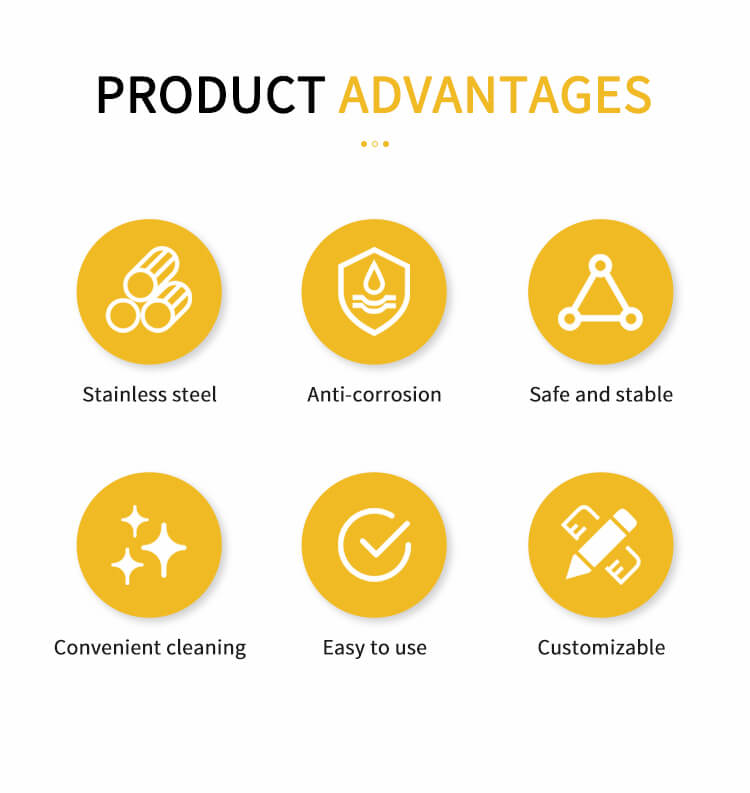Stainless Steel Liquid Mixing Tank: A Crucial Component in Industrial Processes
Stainless steel liquid mixing tanks play a pivotal role in various industries, ensuring efficient blending of liquids and maintaining product quality. These tanks have become indispensable in sectors ranging from pharmaceuticals to food processing. In this comprehensive guide, we will explore the significance of stainless steel reaction vessel, their applications, design considerations, maintenance, and the advantages they offer to businesses.
1. Understanding the Importance of Stainless Steel Liquid Mixing Tanks
Stainless steel liquid mixing tanks are the workhorses of many industries. They are designed to facilitate the uniform mixing of liquids, making them a crucial component in the production process. These tanks are known for their durability, corrosion resistance, and hygiene, which are essential qualities in industries where cleanliness and product integrity are paramount.

The Versatility of Stainless Steel Tanks
One of the key advantages of stainless steel liquid mixing tanks is their versatility. They can handle a wide range of liquids, including corrosive chemicals, food ingredients, and pharmaceutical formulations. This adaptability makes them a valuable asset for businesses across various sectors.
Ensuring Product Quality
Maintaining product quality is a top priority for manufacturers. Stainless steel tanks help achieve this goal by ensuring that the mixing process is consistent and contamination-free. This is especially crucial in industries like pharmaceuticals, where even the slightest impurity can have serious consequences.
Compliance with Regulatory Standards
Industries such as pharmaceuticals and food processing are heavily regulated. Stainless steel tanks are preferred because they meet the stringent standards set by regulatory authorities. They are easy to clean, which is essential for complying with hygiene requirements.
2. Applications of Stainless Steel Liquid Mixing Tanks
Stainless steel liquid mixing tanks find applications in a wide range of industries due to their adaptability and reliability. Let's explore some of the key sectors where these tanks are indispensable.
Pharmaceutical Industry
In the pharmaceutical industry, precision and cleanliness are non-negotiable. Stainless steel tanks are used for mixing active pharmaceutical ingredients (APIs), excipients, and other chemicals. Their corrosion-resistant properties and easy cleaning make them ideal for pharmaceutical production.
Food and Beverage Industry
The food and beverage industry relies on stainless steel tanks for mixing ingredients, preparing sauces, and blending flavors. These tanks are essential for ensuring consistent product quality and taste.

Chemical Manufacturing
Chemical manufacturers use stainless steel liquid mixing tanks for producing a wide range of chemical compounds. The tanks' resistance to corrosion ensures the integrity of the chemicals being processed.
Biotechnology
Biotechnology companies depend on sterile environments for their processes. Stainless steel tanks, with their easy sterilization capabilities, are crucial for bioprocessing applications, including fermentation and cell culture.
Cosmetics and Personal Care
In the cosmetics industry, maintaining the quality and consistency of products is vital. Stainless steel tanks are used for mixing various cosmetic formulations, ensuring that consumers receive high-quality products.
3. Design Considerations for Stainless Steel Liquid Mixing Tanks
The design of stainless steel liquid mixing tanks is critical to their functionality and efficiency. Several factors must be taken into account during the design phase.
Tank Shape and Size
The shape and size of the tank can influence mixing efficiency. Different products may require different tank geometries, such as cylindrical, conical, or square. The size of the tank should also match the production volume.
Agitation Mechanisms
Agitation is the process of stirring or blending liquids within the tank. Various agitation mechanisms, such as impellers, propellers, or magnetic stirrers, can be used. The choice depends on the viscosity of the liquids and the desired mixing intensity.
Material Selection
Stainless steel is the material of choice for these tanks due to its corrosion resistance and durability. However, the grade of stainless steel must be carefully selected to ensure compatibility with the liquids being processed.

Inlet and Outlet Design
The placement and design of inlet and outlet ports are crucial for efficient filling, emptying, and cleaning of the tank. Properly designed ports prevent dead spots where liquids can stagnate.
Temperature and Pressure Control
In some applications, precise temperature and pressure control are essential. Tanks should be equipped with heating and cooling systems and pressure relief valves as needed.
4. Maintenance of Stainless Steel Liquid Mixing Tanks
To maximize the lifespan and performance of stainless steel liquid mixing tanks, regular maintenance is essential. Here are some key maintenance tasks to consider:
Cleaning and Sterilization
Thorough cleaning and sterilization after each use prevent contamination and ensure product quality. Stainless steel tanks are easy to clean and sterilize, making this process relatively simple.
Inspection and Repairs
Regular inspections can identify wear and tear, corrosion, or other issues that may require repairs. Promptly addressing these issues can prevent costly downtime.

Calibration and Testing
Calibrating mixing equipment and testing the accuracy of instruments such as temperature and pressure sensors is essential for consistent results.
5. Advantages of Using Stainless Steel Liquid Mixing Tanks
Businesses across various industries choose stainless steel liquid mixing tanks for several compelling reasons. Let's explore the advantages they offer:
Durability
Stainless steel tanks are known for their longevity, even when subjected to harsh chemicals or extreme temperatures. This durability translates to long-term cost savings for businesses.
Corrosion Resistance
The corrosion resistance of stainless steel ensures that the tank's structural integrity remains intact over time. This is particularly important when handling corrosive substances.

Hygiene
Stainless steel tanks are easy to clean and sterilize, making them ideal for industries with strict hygiene requirements, such as pharmaceuticals and food processing.
Customizability
Tanks can be customized to meet specific requirements, including size, shape, and agitation mechanisms, ensuring they are tailored to the production process.
Regulatory Compliance
Stainless steel tanks are designed to meet regulatory standards, which is crucial for industries with stringent compliance requirements.
In conclusion, stainless steel liquid mixing tanks are essential components in industries where precise blending and product quality are paramount. Their versatility, durability, and compliance with regulatory standards make them a wise investment for businesses across the pharmaceutical, food and beverage, chemical, biotechnology, cosmetics, and personal care sectors. Proper design and maintenance are key to ensuring their optimal performance and longevity, making them indispensable assets in modern industrial processes.


